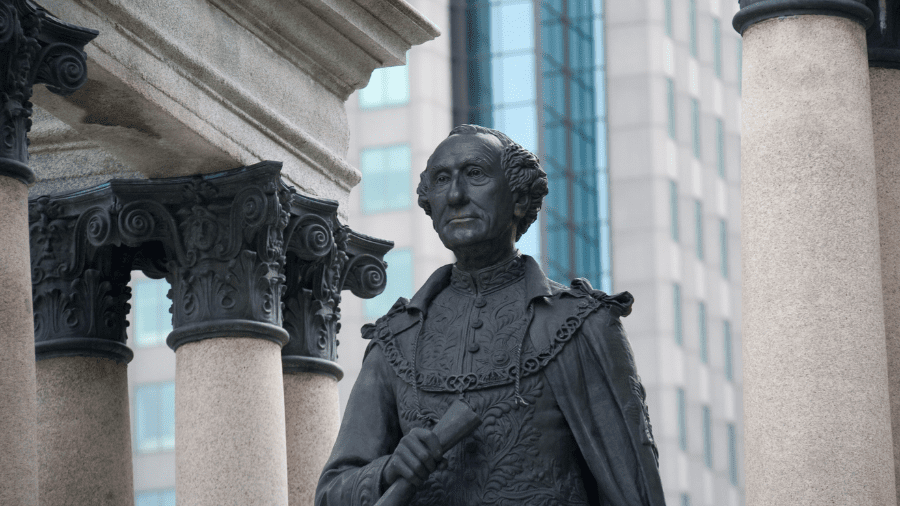This article originally appeared in the Montreal Gazette.
By Patrice Dutil, February 16, 2023
Montreal’s city council is about to consider an ad hoc committee’s recommendation that the battered 130-year-old statue of Sir John A. Macdonald be donated to a museum, rather than restored to its former location in Place du Canada.
The issue arises because the sculpture, which had been vandalized numerous times over the years, was pulled down and broken into pieces during a 2020 protest, not against Macdonald, but following the murder of George Floyd by Minneapolis police.
The rationale for not restoring the statue is that Macdonald played “a central role in discriminatory policies towards many people, notably the Indigenous people, the Métis, the French Canadians and Chinese workers, making him a controversial person in Canadian history.” His values were found to be contrary to those of the Charte montréalaise des droits et responsabilités (2006).
The loss of the Macdonald monument would mean the loss of a fixture of the cityscape. It would also mean the loss of much more:
Sense of respect for the law: The monument, which was paid for not by government, but by hundreds of citizens in 1895, and whose unveiling was witnessed by 10,000 people, was torn down by a dozen hooligans. The committee’s advice rewards the actions of criminals.
Sense of history: Sir John A. Macdonald’s party was elected by the people of Quebec no fewer than six times, most times winning a vast majority of seats and the largest share of the vote. In his last election, in 1891, six years after the Métis uprising in the Northwest, Macdonald still managed to take 49.1 per cent of the vote in Quebec, beating Wilfrid Laurier by three percentage points. The Conservatives also won most of the seats in Montreal.
Sense of continuity: The presence of Sir John A. Macdonald in Place du Canada is a continual reminder of the country’s roots. Its nearly 130 years — nearly as old as Canada itself — are nothing to sneer at, regardless of the nature of one’s nationalism.
Sense of pride: Macdonald was not perfect by any stretch of the imagination, but his accomplishments in building a Canada from coast to coast were nothing short of incredible.
Sense of understanding of past intentions: Compared to how his contemporaries treated Indigenous people, Chinese workers and the Métis, Macdonald’s actions were relatively progressive, and it is high time this be recognized. And his policies were carried out with the full accord of Québécois and other Canadians. While there was regret when Louis Riel was hanged, history must not forget the young Québécois who rushed to enlist in the military to fight against Riel’s Northwest Rebellion in 1885. In the next election Macdonald did receive a reduced popular vote from Quebecers, but he still won Quebec.
As well, to my knowledge, no one has demonstrated how tearing down Macdonald’s statue would advance reconciliation.
The ad hoc committee’s reading of history is flawed. Laurier, speaking in the House of Commons, said it best when he eulogized his adversary two days after Macdonald’s death in June 1891: Macdonald had been “Canada’s most illustrious son, and in every sense Canada’s most foremost citizen and statesman.” He would know, and his words should not be forgotten.
The sad reality is that almost all monuments to Macdonald have been removed, except in Toronto and in Ottawa. City council should reject the recommendations of its ad hoc committee, restore the statue in its rightful place, and find another creative solution to honouring the Indigenous people, Chinese workers and the Métis so that Montrealers can pay tribute as they pass new monuments.
Council should take advantage of an opportunity to do something bold in these times of weak resolve.
Patrice Dutil is a historian and a senior fellow at the Macdonald-Laurier Institute. His latest book is The Unexpected Louis St-Laurent: Politics and Policies for a Modern Canada.





